The History & Ingredients of Ceviche, Peru’s Star Starter
- October 2021
- By Isabelle Banin
- Recipe from Peru
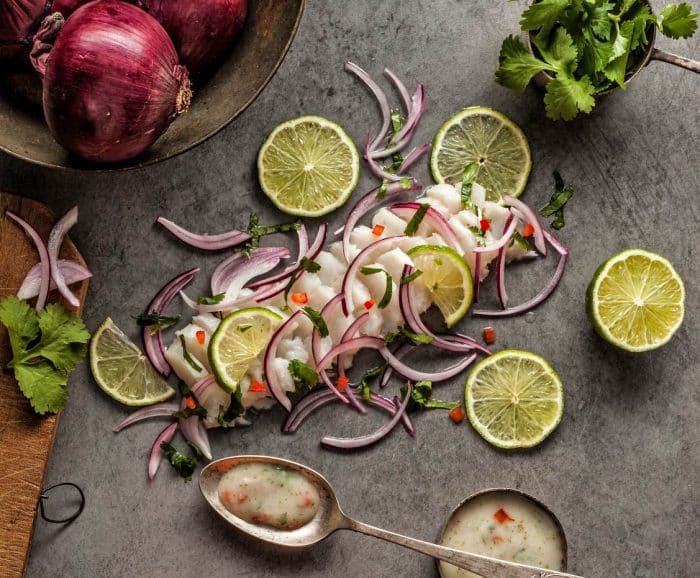
Ceviche—raw fish cured with citrus—is one of the best known Peruvian culinary techniques and a defining dish of Latino cuisine. It’s also delicioso, light and refreshing, making it a popular appetizer in homes and restaurants throughout the U.S. and the world. Thank you, Perú.
The dish is also a swirl of mysteries. First, what to call it? The food’s spelling is always up for debate. Is it ceviche, cebiche, seviche or sebiche? In her definitive 901-page Gran Cocina Latina: The Food of Latin America, published in 2012, scholar and chef Maricel E. Presilla chooses to use “cebiche,” while acknowledging that ”the origins of the ‘cooking’ or ‘curing’ method of this dish, and even the etymology of the name, remain obscure.”
The word ceviche has been associated with the Spanish cooking term escabeche—say escabeche several times fast and you’ll hear how similar it sounds to the word ceviche. Escabeche is a method of pickling fish in ingredients like vinegar, onion, sugar and spices. The Royal Spanish Academy notes that the word escabeche is derived from the Middle Persian term sikbāg, referring to food that is prepared with vinegar. Meaning its name may be Middle Eastern! It also may be related to the Quechua word siwichi for fresh or tender fish, according to Peruvian historian and geographer Javier Pulgar Vidal. Bottom line: there is no definitive theory.
Here at Familia Kitchen, we use the spelling “ceviche,” since it is the most recognizable in the U.S. and accepted by the Spanish Royal Academy.
The Mixed Origins of Peruvian Cuisine
Onto its ingredients!
Peruvian dishes like ceviche reflect the country’s rich cultural diversity and history of culinary innovation. Presilla writes that “the first Peruvian cebiches were made with the juice of Seville (bitter) origins, the first citrus to be introduced to the New World.” Researching the dish’s origins in her “Peruvian Food: the Social and Cultural Origins of Peruvian Food,” Kari Hatlestad reports that indigenous populations 20,000 years ago subsisted on ingredients native to the region, like potatoes and grains. Groups from the highlands and coastal areas began to trade prior to the second millennium BCE, diversifying their diets with fish, chili peppers, gourds y más, which contribute to the dish today.
Signature elements of classic Peruvian ceviche include white fish, cilantro, lime juice, cilantro, and red onion. The lime juice is key—its acid is used to break down or denature the proteins in the fish, causing the pescado to become opaque. That is how you know it is “cooked.”
The very diversity of Peruvian cuisine is part of what makes ceviche so delicioso, but the dish also speaks to the country’s history of colonization and enslavement.
Depending on the freshness of the fish, acidity of the citrus juice, and time of marination, ceviche is usually very safe to eat. However, experts advise treating ceviche like raw fish, meaning that certain at-risk populations should avoid it.
The Role of Colonization and Immigration
The very diversity of Peruvian cuisine is part of what makes ceviche so delicioso, but the dish also reflects the country’s history of colonization and enslavement. New ingredients and food-preparation methods from Spain and Africa were introduced to Peru by Spanish colonizers in the 16th century. Spanish cuisine is influenced by techniques and ingredients of Middle Eastern cuisine, due to the Moorish invasion of the Iberian peninsula in the 8th century.
Adding to the influences of this deceptively simple-seeming dish and the complexities of Peruvian cuisine in general, immigrants from China and Japan arrived in the late 18th and early 19th centuries with their own cooking techniques and traditions. The result? Three separate and distinct Peruvian food cultures mixed with the Andean and Amazonian indigenous techniques and ingredients to create a trio of defining influences that you can taste today on the Peruvian plate: creole (Spanish), nikkei (Japanese) and chifa (Chinese).
How Ceviche became Popular in Peru
While we don’t know for certain how this dish was invented, we know many tales about the possibilities. According to Gran Cocina Latina’s Presilla, Spain introduced orange trees to Peru in the 16th century, but it’s also possible that other citrus fruit was already there, indigenous to Peru and responsible for the marriage of acid and fish. Other theories say the Moche civilization began eating a version of ceviche nearly 2,000 years ago in what is now Perú. Another is that the Inca empire marinated fish with chicha, a fermented drink made from corn.
Some historians give the ceviche-creation credit to Moorish women, who arrived to Perú from Granada, Spain aboard the 16th-century boats of the colonizers. And there is no doubt that the enduring popularity of ceviche was influenced by the arrival of Japanese immigrants during the 19th century as a result of Peru’s newly formed diplomatic relations with Japan. They brought with them long-established preparations and love for raw fish.
It’s also possible that all of these origin stories are true and had a hand in creating the ceviche we know and love today.
Family-Famous Ceviche Recipes We Love
Ceviche From Perú
The traditional Peruvian variation of this dish is marinated for a few hours and served at room temperature. A classic example of this approach is the Bellido Familia’s White Fish Ceviche with Lime, Red Onion and Ají Sauce, made by our very own Familia Kitchen cook, Susana Bellido Cummings. A bold take on ceviche was introduced in the 1970s. Peruvian-Japanese chefs at top Lima restaurants in the 1970s and 1980s like Dario Matsufuji and Humberto Sato, as well as Nobu Matsuhisa, owner of the legendary Nobu restaurants outside of Perú, popularized a way of marinating fish for only a few minutes. Both traditional and modern styles of ceviche are globally popular today.
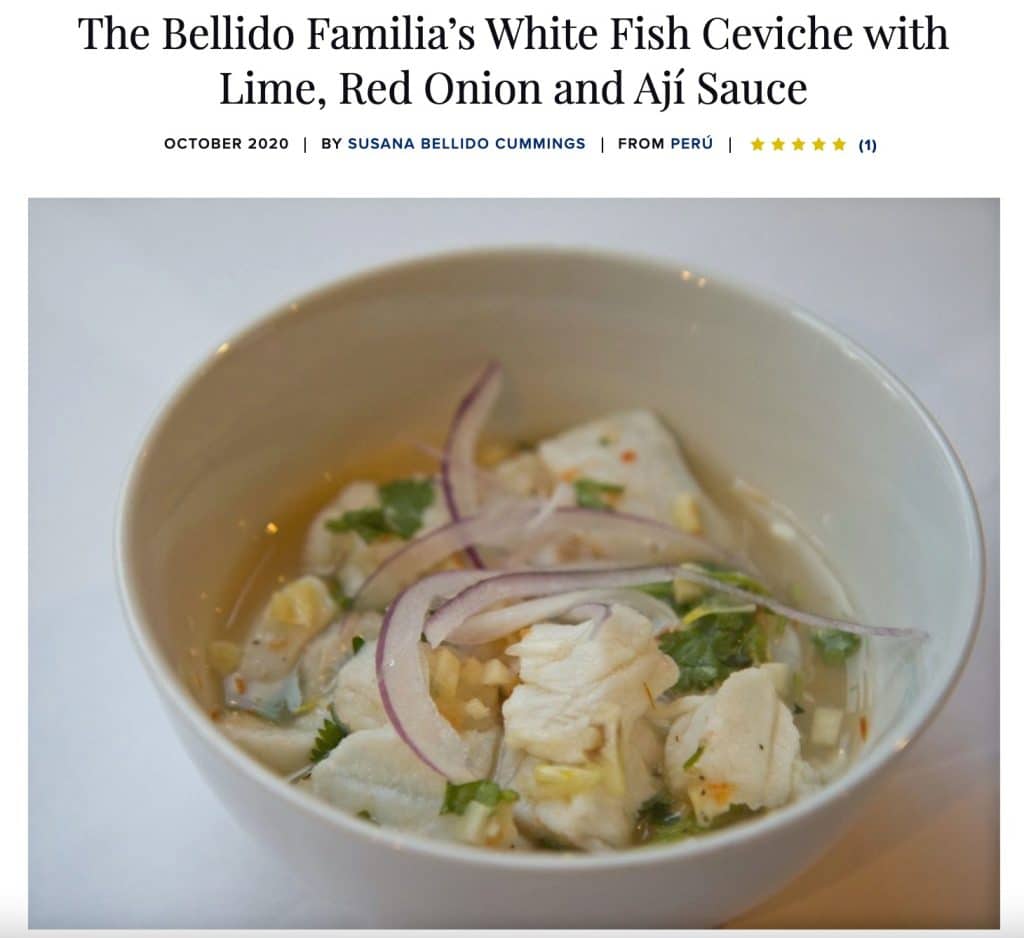
Ceviche From Ecuador
Ecuadorian ceviche often uses shrimp, corvina and other seafood instead of the classic white fish! Some even boil the shrimp to make the ceviche, pushing the boundaries of what is classified as ceviche. An example of an Ecuadorian-style version of this dish can be found in this shrimp ceviche. Karen’s family receta calls for simmering uncooked shrimp shells in water with garlic, a pinch of shrimp bouillon, sugar, ketchup and mustard. The resulting flavor is muy intenso and we love it.
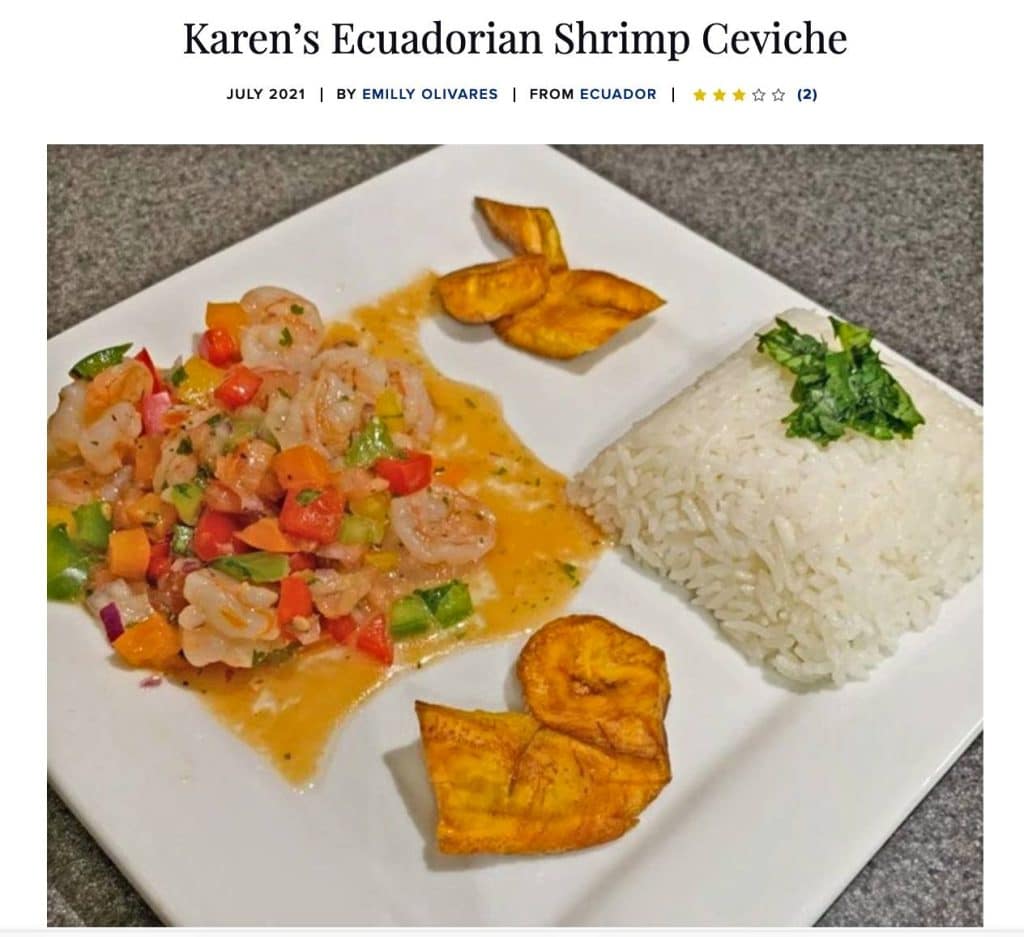
Ceviche From Mexico
In Mexico, ceviche traditionally includes diced tomato, like Maria Sagrario Gloria does in her family-famous receta for shrimp ceviche with cucumber, tomate and chiles.
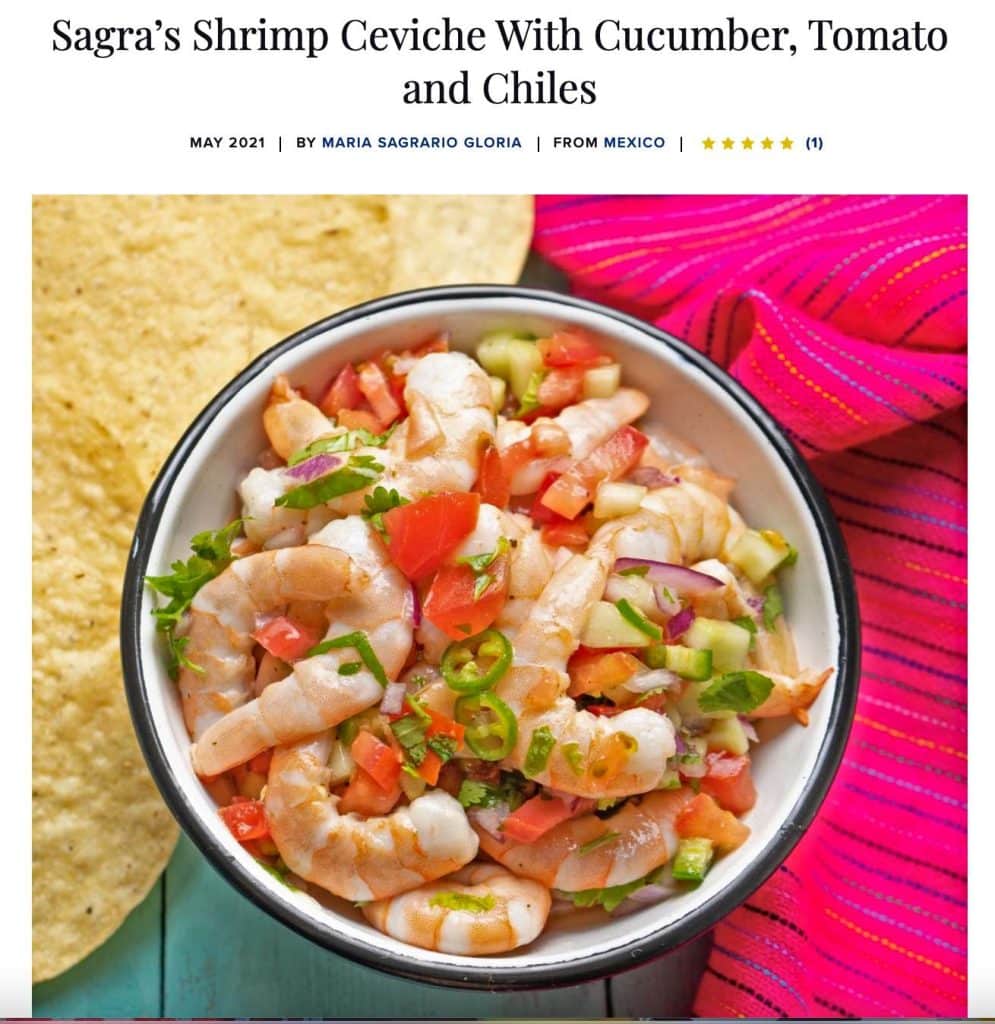
”This shrimp ceviche was created for a very special person in my familia,” writes Bex Streeper, one of our favorite Puerto Rican-Mexican food homecooks. Bex cures the shrimp in two types of citrus juices—lime and lemon. Bex also adds a third juice: mango. It’s an unusual tropical twist and it is delicioso!
Our Familia Kitchen community loves this starter with a long and rich food history, voting this recipe the winner of our Your Favorite Ceviche Recipe Contest—against strong competition, too!
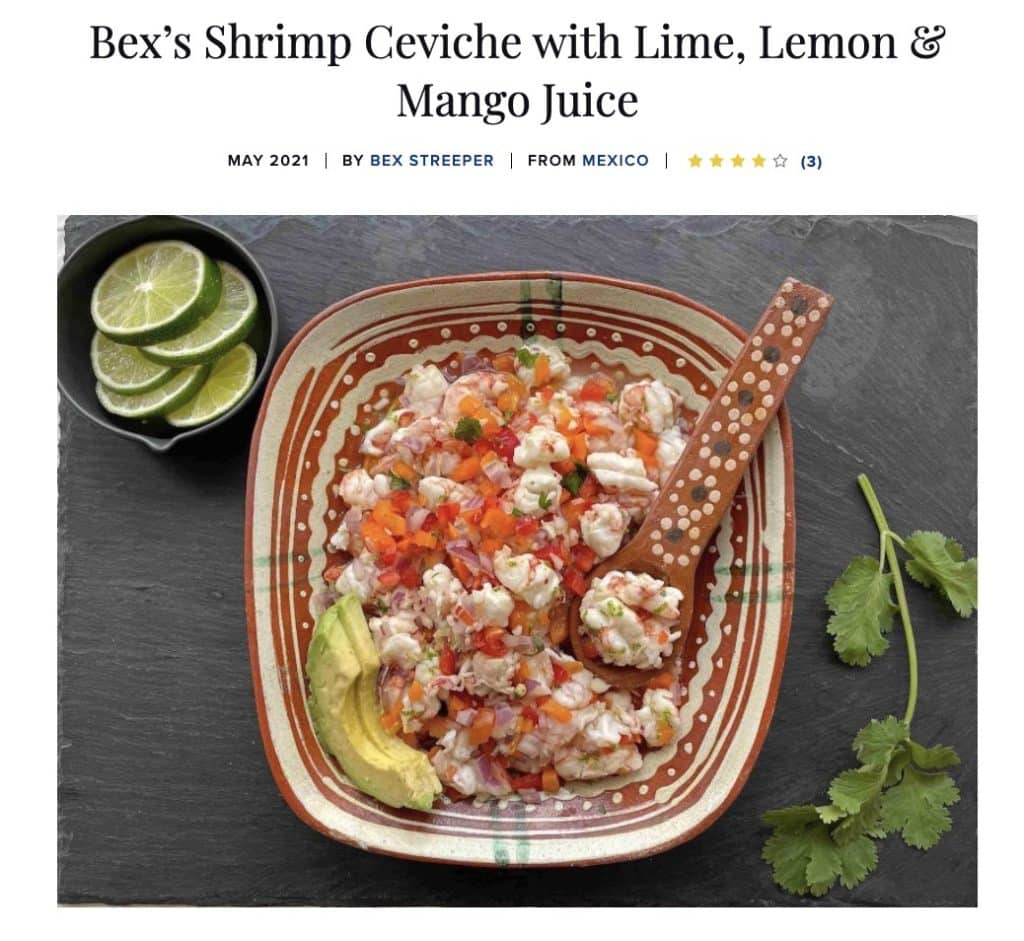
… y Muchos Ceviches Más!
Nearly every Latin American country has its twist on ceviche, offering its own take on this light and refreshing food—from Nicaraguan’s black conch ceviche to Puerto Rico’s ceviche made with coconut milk. What these fish dish variations have in common is marinating seafood in citrus, but from there the possibilities are endless.
All we know is, we Latinos love ceviche, any time of day. And as one of our favorite Peruvian cooks Susana Bellido Cummings reminds us, “if you want to go really native, save the ceviche juice or leche de tigre (tiger’s milk), which, combined with a shot of pisco, is an excellent pick-me-up after a beer too many.”
How does your family make ceviche? If you need inspiration, check out some of our favorite recipes!
We invite you to submit your family-famous recipe, so we can spotlight yours in our open-to-all treasury of the most delicious traditional recipes that define the very best of our cocina Latina.
MoreLike This

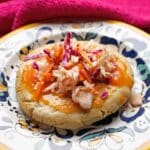
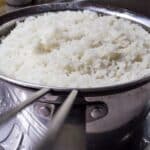
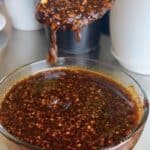
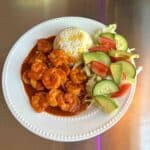
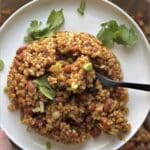
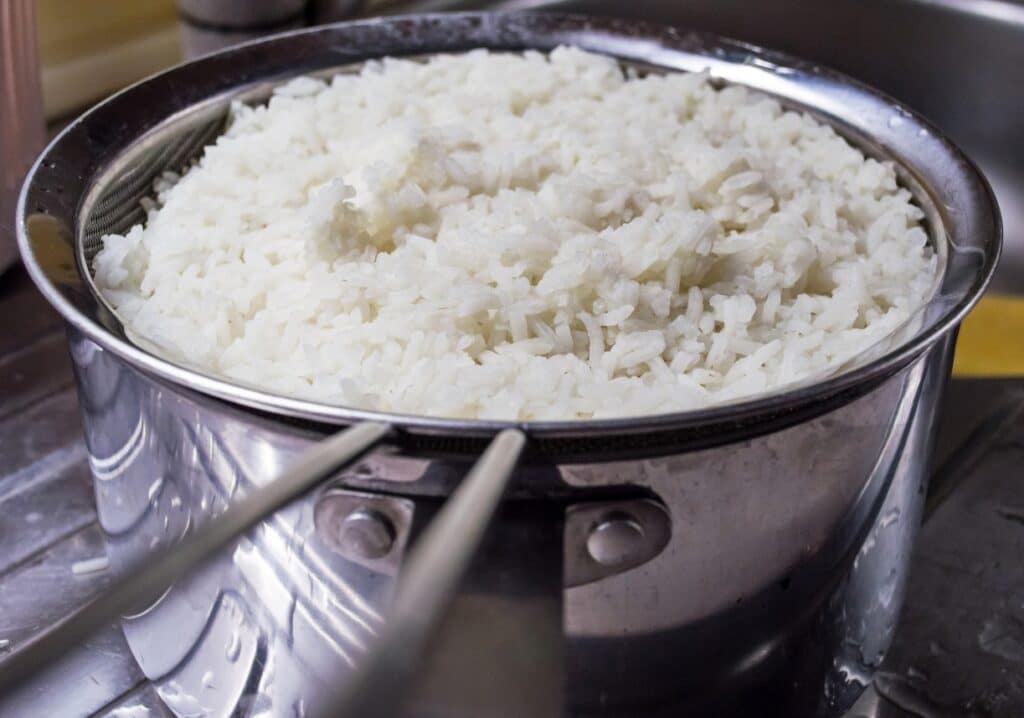


Got a question or suggestion?
Please rate this recipe and leave any tips, substitutions, or Qs you have!